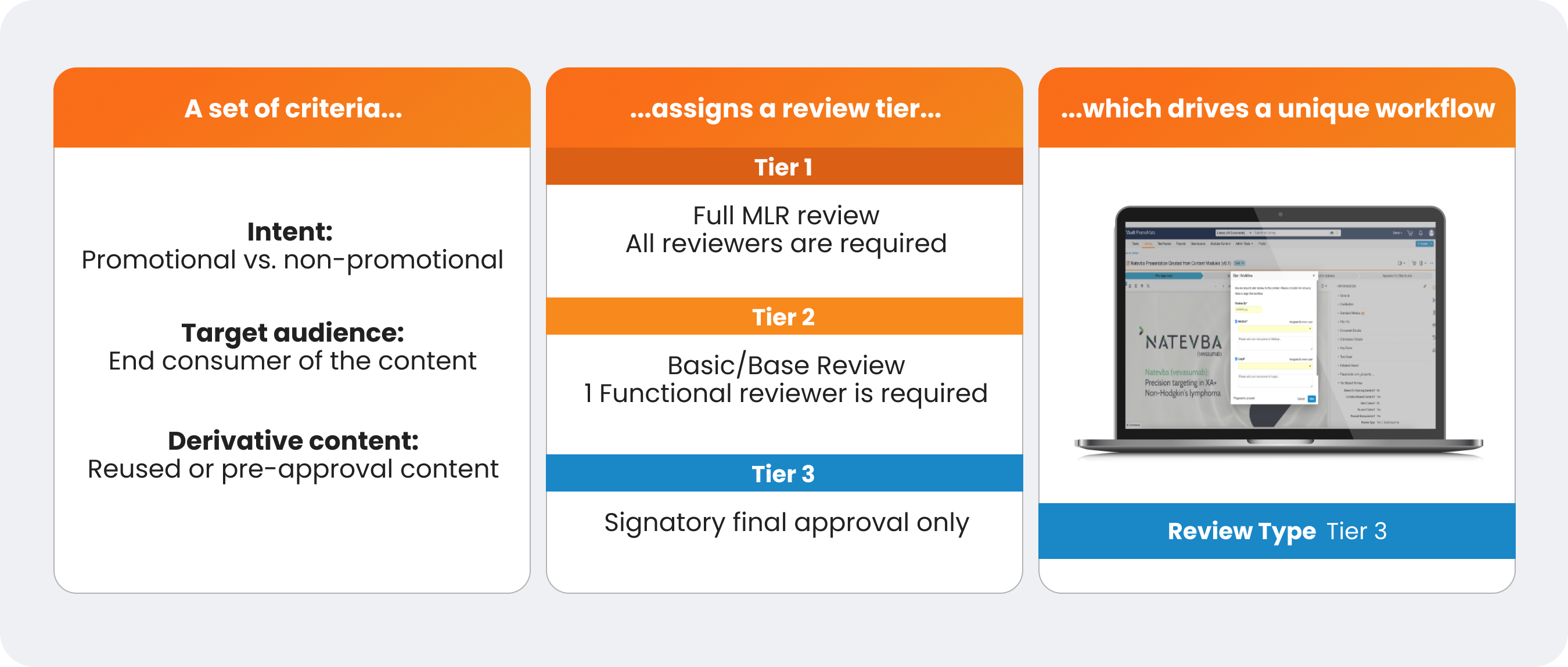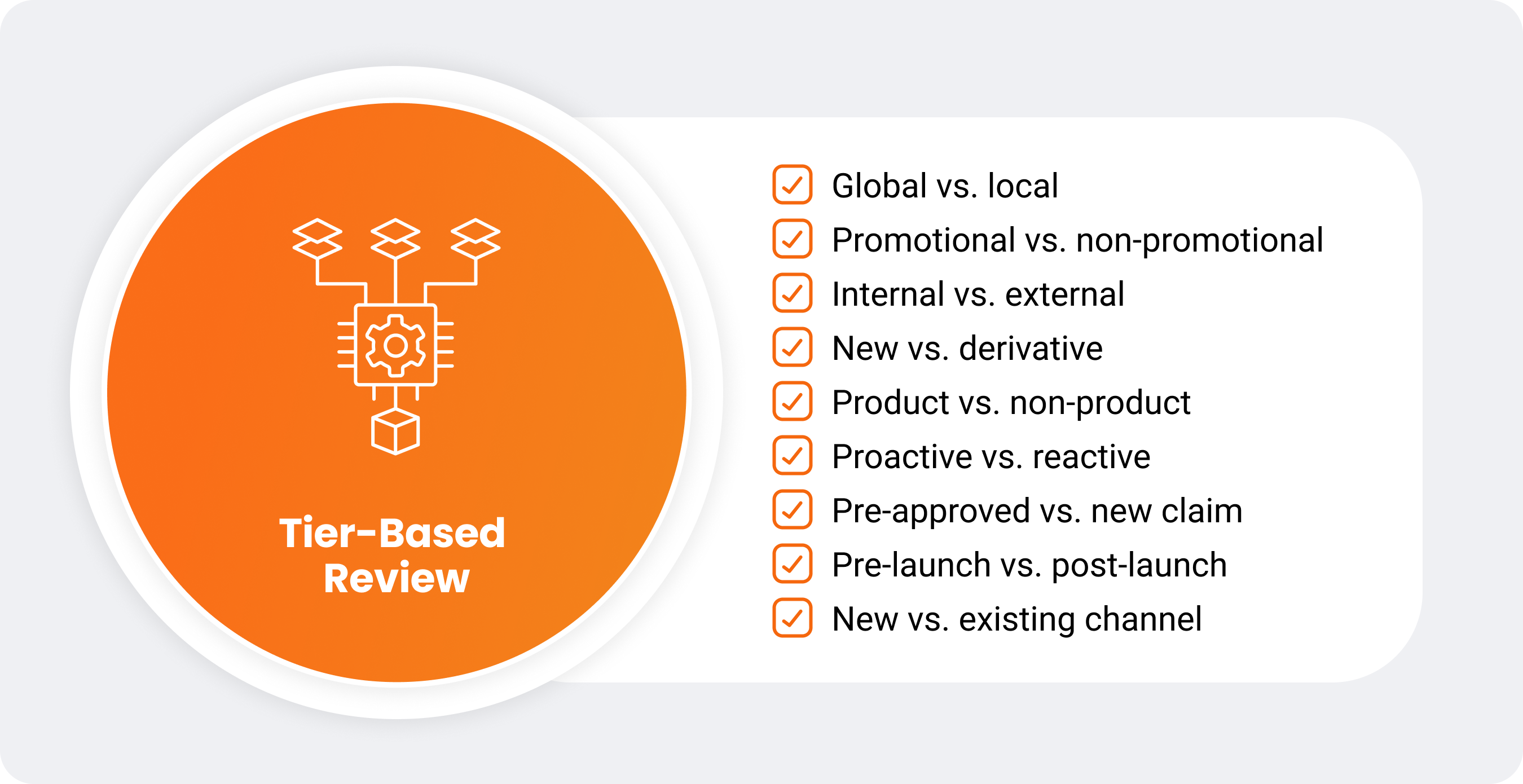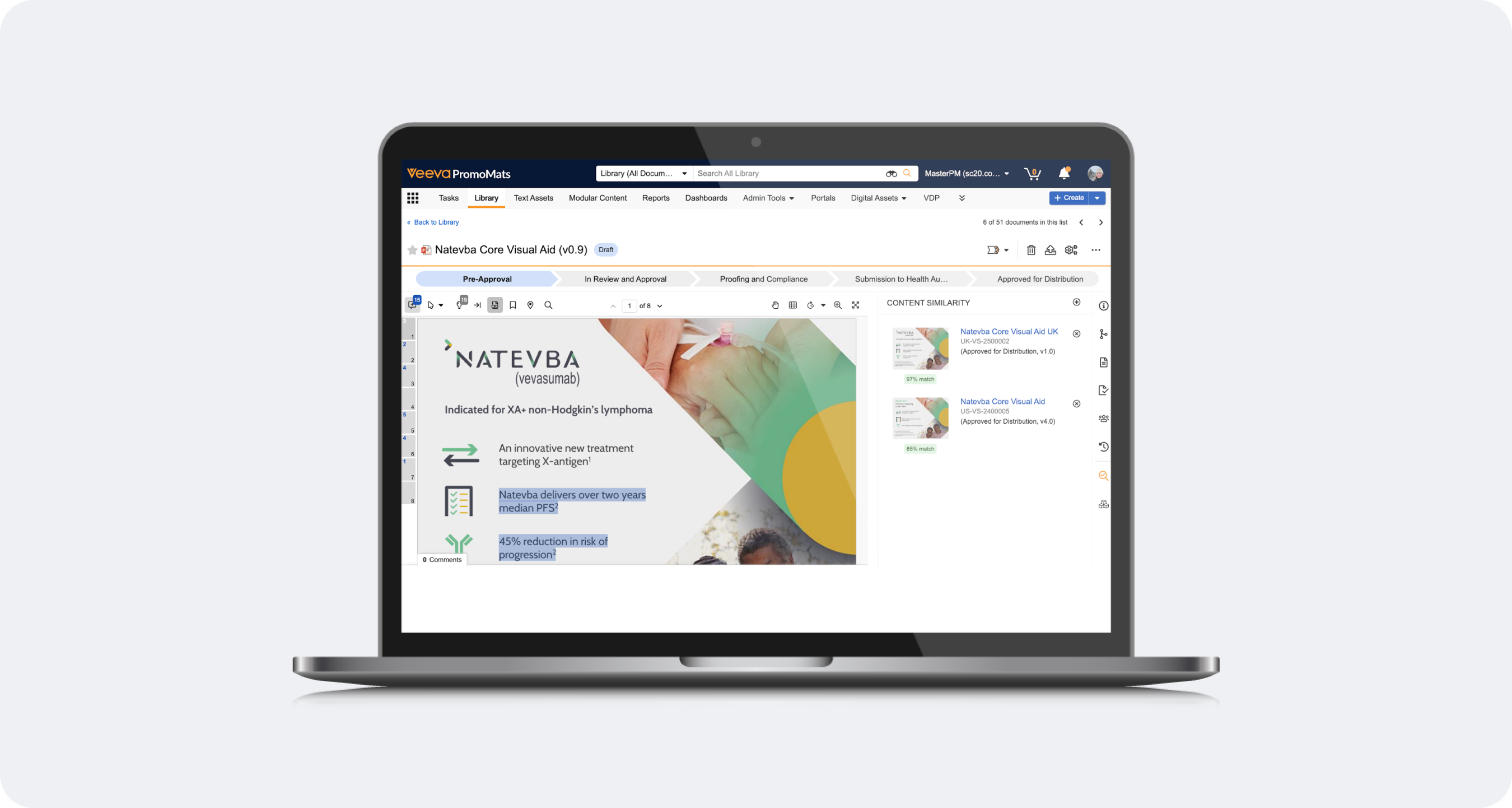Blog
Realizing Value in MLR with Tier-Based Review
Aug 22, 2025 | John Masterson
Aug 22, 2025 | John Masterson
Providing customers with accurate, balanced, and timely content requires continuously improving medical, legal, and regulatory (MLR) review. Tier-based review can help fill the need by reducing manual steps and highlighting material that needs MLR experts’ attention the most.
Content teams that leverage tier-based review are more likely to meet strategic objectives across the content supply chain and maximize reviewers’ time. Creating efficiencies becomes more valuable as personalization, regional variations of content, and the growing number of product launches increase overall content volume.
Tier-based review streamlines reviews by:
- Increasing the chances of documents requiring a lighter review
- Determining when certain reviewers are not needed
- Allowing existing resources to handle more content to meet growing demand
The following FAQs are a starting point to learn more about tiered review and how it adds measurable value for stakeholders in the content lifecycle.
What is tier-based review?
Tier-based review categorizes content, assigns various review processes, and designates the MLR roles involved based on the complexity and risk of each item. Tiers and risk tolerance levels are unique to each organization. To choose them, companies consider numerous factors including the type of content, whether it’s derivative versus non-derivative, and brand maturity (Figure 1).
A tiered system drives efficiency, moving content through the cycle quickly and compliantly. Reviewers can focus less on manual and administrative tasks and more on adhering to regulatory standards and ensuring content is timely and relevant. The resource savings are especially important as content volumes increase and reviewer headcount remains stagnant.
Figure 1: Automating tier-based review for faster MLR

What factors should my organization consider to establish tiers?
Many of the factors biopharmas use to categorize tiers are attributes your organization is likely already capturing for documents in Veeva PromoMats. Using one or more of these items makes for an easier jumping-off point in establishing tier-based review (Figure 2).
Figure 2: Factors for defining tiers

How does something like content similarity work with tier-based review?
Content similarity is a method of comparing the likeness of two pieces of content. Using keywords and images, the feature scores documents’ similarity, or likeness, to another piece of content, helping to more efficiently assign derivative content to the proper tier for MLR review. In PromoMats, these similarity scores can become part of the criteria that drives automation of tier-based review (Figure 3). The scoring feature performs best when checking ‘like’ document types, or those classified the same way in PromoMats.
Figure 3: Content similarity in PromoMats

What if stakeholders are hesitant to automate parts of review?
Content approval is a complex and delicate process that can create risk if not executed well. Leaders should collaborate with reviewers on the best-fit model for their organization and guide the teams through the changes brought by automating steps in reviews. Communicate that the foundation of success is validating and evaluating tiers and determining appropriate risk tolerance when setting the threshold for what is derivative content.
Benefits of tier-based review by role
- Relieves MLR of manual tasks so reviewers can attend to high-value, high-risk material
- Establishes clear standards for a tiered review model, enabled by technology, to support scalable tiering models and simplify routing for brand managers and/or coordinators
- Reduces time to market for content, enabling brand managers to deliver relevant, personalized experiences
Watch this brief video to learn how Takeda achieved a 20% reduction in time to approval with tier-based review.
